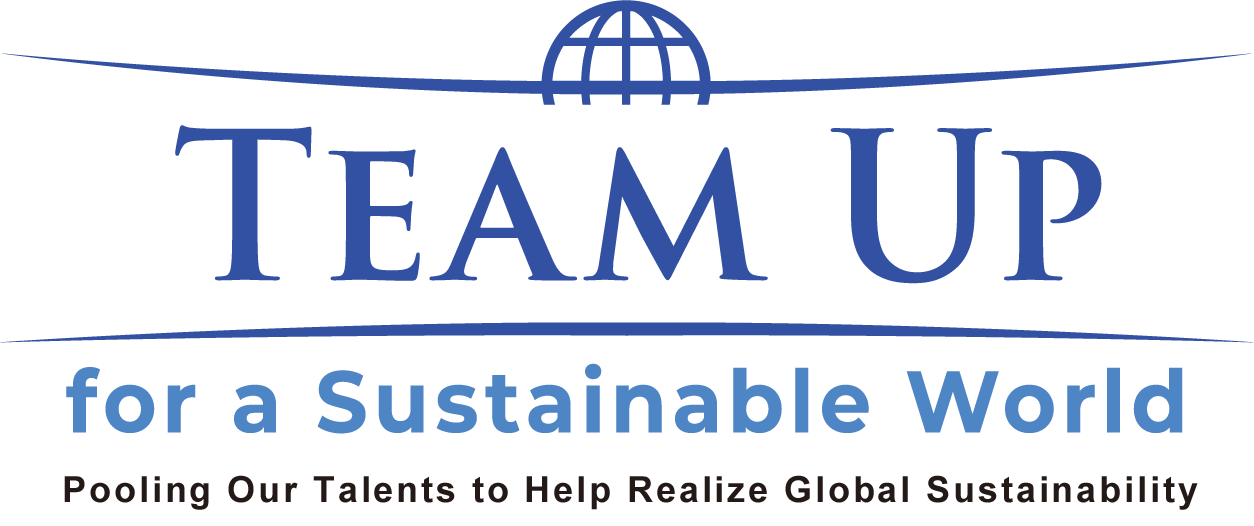TEAM UP for a Sustainable World:サーモンの陸上養殖事業
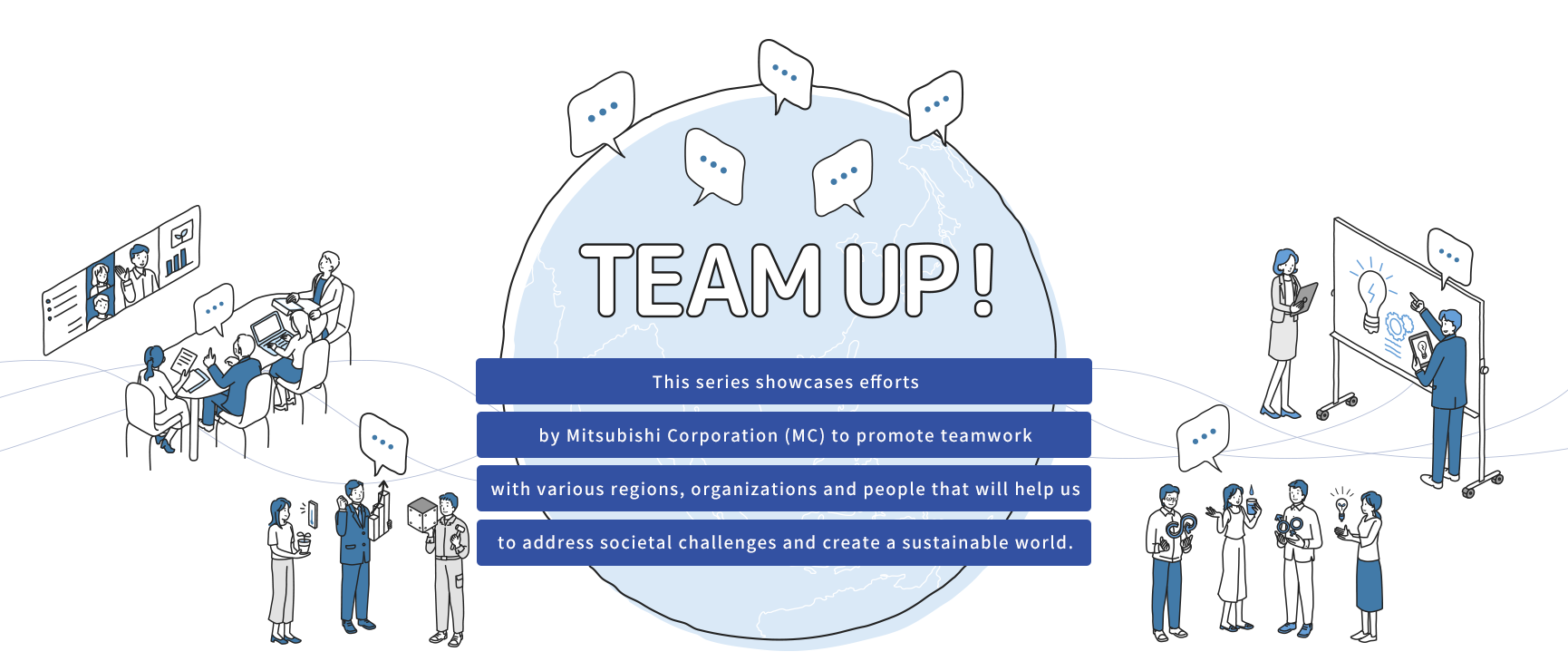
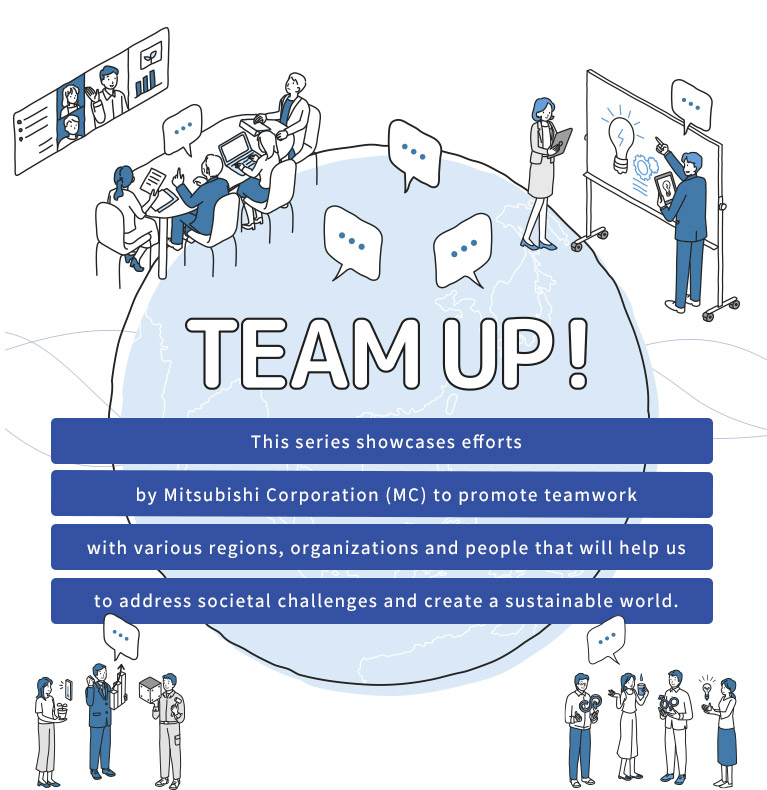
EX/DX-Driven Evolution in Salmon Farming TEAM UP for a Sustainable World
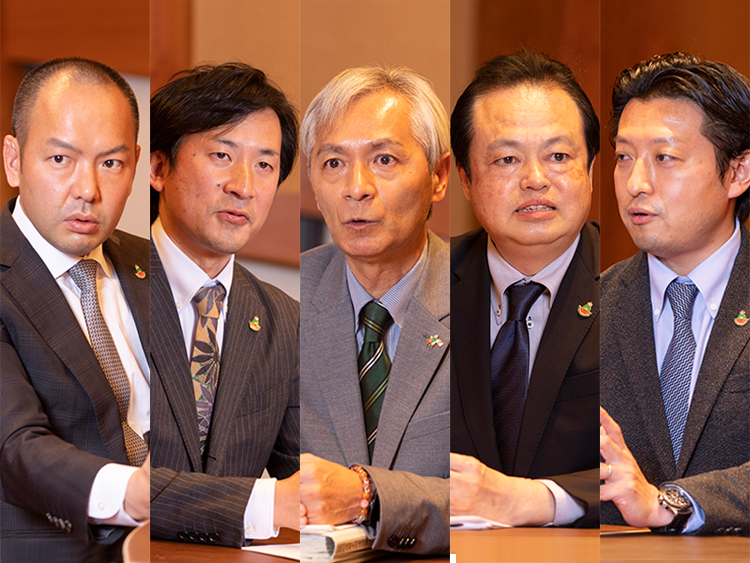
Land-based Salmon-Farming Business (2)
Nyuzen Town is located in Toyama Prefecture at the foot of the Northern Japanese Alps. Recently it has been garnering attention in Japan's seafood industry, thanks largely to a land-based salmon-farming business launched by Atland Corporation (Atland), which is a joint venture between Mitsubishi Corporation (MC) and Maruha Nichiro Corporation (Maruha Nichiro). Why was Nyuzen Town chosen for this venture, and how does a green and smart aquaculture business set itself apart from traditional fish-farming operations? The next two volumes in this series feature a roundtable discussion between representatives from Maruha Nichiro and MC and a Nyuzen Town official, who answer those questions and describe new challenges.
- Roundtable Participants
-
Ryoichi Tanaka (Nyuzen Town Kirakira Commerce and Tourism Section Manager)
Naohisa Kasuga (Outside Director, ATLAND; on secondment from Maruha Nichiro)
Makoto Mitarai (Executive Vice President, ATLAND; on secondment from Maruha Nichiro)
Kengo Morimoto (Team Leader, Tuna & Seafood Products Team, Produce & Marine Products Department(At the time of the discussion))
Takeshi Maruyama (President and Representative Director, ATLAND; on secondment from MC)
- Interviewer
- Kazuhiro Sekine (GLOBE+ Editor in Chief)
A Community Blessed by Water -- Nyuzen Town, Toyama Prefecture
—— Today I am in Nyuzen Town, where a land-based salmon-farming facility is being built. Can you tell me a bit about this area?
Tanaka Nyuzen Town is in northeastern part of Toyama Prefecture. It faces the Sea of Japan and is situated on a large delta fed by the Kurobe River. There was a time when its residents struggled with overflows from the river, but thanks to a variety of civil initiatives, it is now one of Japan's most famous rice-growing regions. Among the town's improvements were flood-control works and the Ryusui-kyakudo project, which brought in red clay from the mountains to create waterways to feed the rice crops. Rice that is grown in Nyuzen Town and boiled in spring water from Kurobe River is truly delicious. In 2001, work began to pump up deep-sea water from Toyama Bay, which boasts some of Japan's deepest waters. Not only can this water be used to make foods, beverages, cosmetics and other such products, but it can also be used for oyster farming and pursing, abalone farming, and making pre-cooked packed rice. The town's previous generations worked hard to transform the region from one that lived in fear of water to one that feels blessed by the water. Even today, water continues to bestow this region with new blessings.
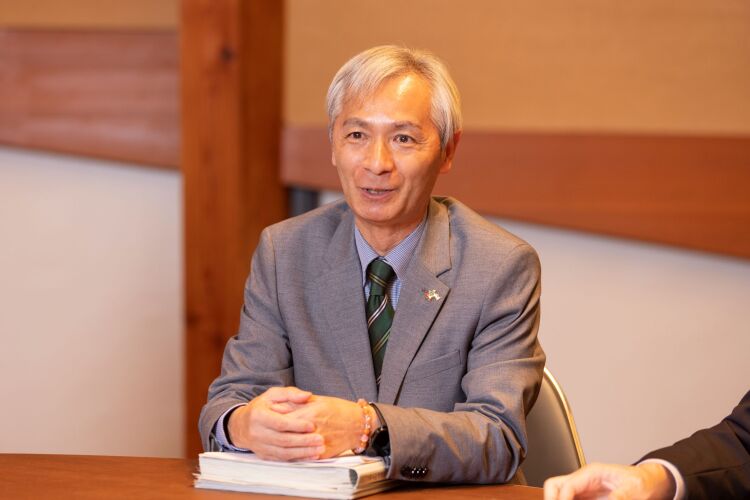
Aiming for Delicious, Premium-quality Salmon
——That business is slated to begin in 2025, but how has the work been progressing thus far?
Kasuga The world's natural fish catches plateaued in the 1990s, but aquaculture production has continued to grow. As we explained when we outlined this business (see Vol. 1), global demand for salmon is on the rise, which is driving up production from fish farms in Norway, Chile and other parts of the world. In case of the traditional farming by Sea cages, however, the production will be affected by a lot of environmental hazards, including changes in ocean currents or temperatures, red tides and typhoons, and fish diseases caused by viruses, pathogens, and so on. However, a land-based fish farm allows us to artificially control the environment, covering everything from water temperature and salt content, to wavelength adjustments in the light source, which is another factor that can dictate how well the fish grow. Because these facilities allow us to optimize the salmon's environment, they also make it possible for us to stabilize production. Furthermore, we believe that in the near future, land-based farms will be able to produce salmon that is better tasting, more nutritious, faster growing, and more environmentally friendly than salmon produced in sea cage farms.
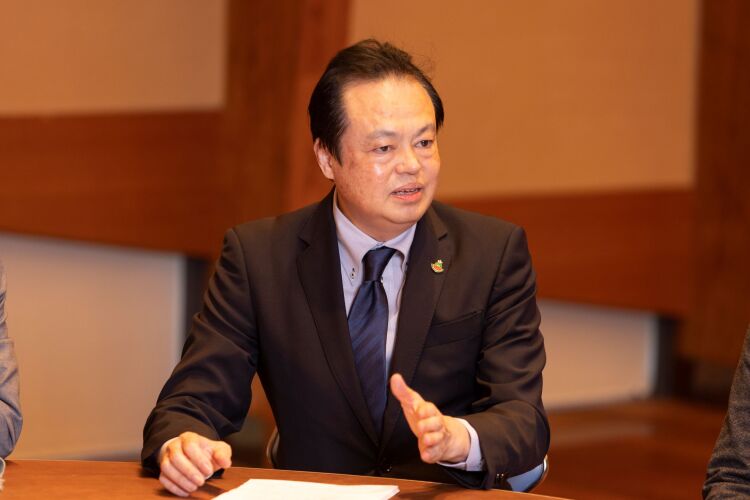
Maruha Nichiro has been in business for 143 years. Our main operations are fishing, aquaculture, and the import, export and processing of marine products. Our responsibility is to deliver safe, stable and delicious seafood to society, and we are keen to leverage our decades of know-how to help make Atland's salmon farming business a success.
Realizing "Green" Land-based Aquaculture Through EX
—— This fish-farming business is being described as a "green" operation. Can you explain what that means?
Morimoto There are three main points to this, and it is connected in part to MC's energy transformation work. The first point is that fish farmed through the traditional sea cage method have to be shipped to Japan by an air or ocean transportation from distant countries like Norway or Chile. So in addition to satisfying Japan's need for more "local-production-for-local-consumption" business models, producing salmon domestically will also help to lower our carbon footprint.* The second point is that by using deep seawater from Toyama Bay to maintain the temperature of the water in the fish tanks, Atland will be able to lower its energy consumption. And the third point is that Atland will be using as much renewable energy as possible to satisfy its electricity needs.
- *CO2 equivalent of greenhouse gas emissions from the business's entire life cyle, covering both products and services (from sourcing of raw materials to recycling and processing of waste materials).
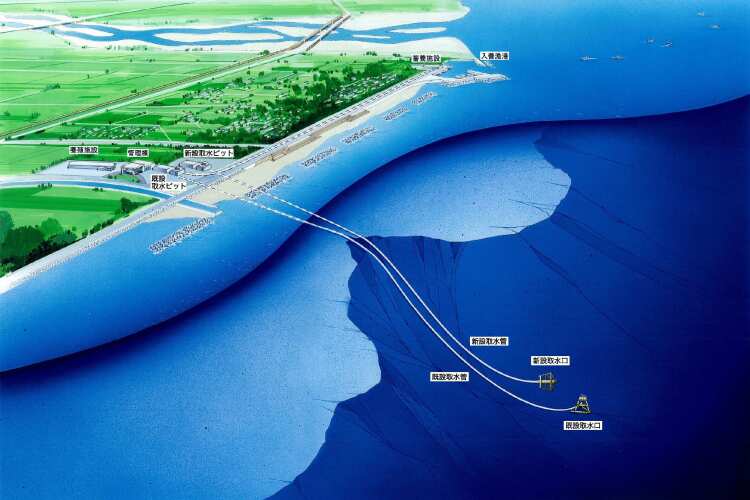
The lower line is the existing intake line. The upper line is a new intake line that will be installed in 2024. (Image courtesty of Nyuzen Town)
—— Mr. Tanaka's explanation of the deep seawater suggests that it is a very valuable resource for this business.
Maruyama Absolutely. We decided to start our business in Nyuzen Town by getting attracted to the water resources, not only the underground water from the Kurobe River delta, also the deep seawater from Toyama Bay. That seawater is pumped up from a depth of 384 meters, and it is extremely cold, maintaining a year-round temperature of around 3°C. Land-based aquaculture involves a lot of different processes which require both fresh and salt water, but deep seawater is particularly important because it can be maintained at a very low temperature. That cooling effect is vital because the temperature of the water in the fish tanks can start to rise due to metabolic heat from the fish and heat generated from the machinery. Normal land-based fish farms require an enormous amount of electricity, but thanks to the cold water from Toyama Bay, we can cut that consumption quite drastically, thus lowering the cost of running the facility while making it more environmentally friendly as well.
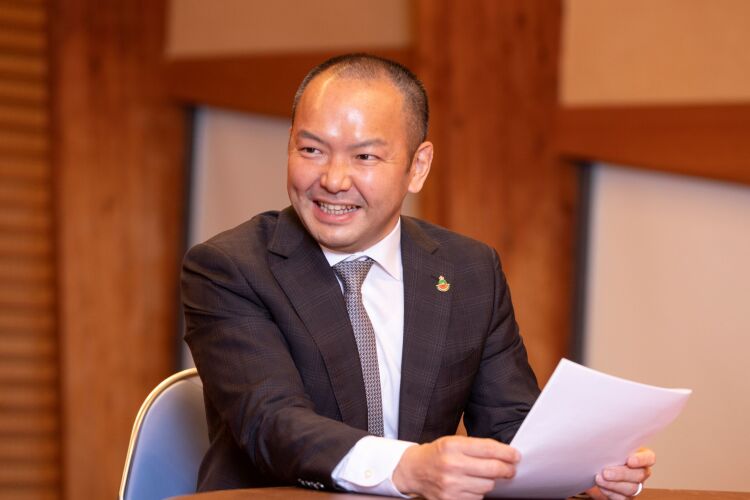
Tanaka Another point worth mentioning is that the deep seawater in Nyuzen Town is a multi-purpose resource, insofar as it has both primary and secondary uses. Its first use, when it is still 3°C, is as a coolant at a factory that produces pre-cooked packed rice. That warms the water to between 10°C and 13°C, from which point it is used to purge oysters and in farming trials for cherry salmon and a kind of seaweed. Adding Atland's fish-farming operations to its uses will make this resource even more versatile.
Making Land-based Aquaculture "Smarter" Through DX
—— Another feature of this business is its use of cutting-edge technologies. Tell us why this is "smart" fish farming.
Mitarai It might be difficult for people to picture a land-based fish farm, but essentially it is like a factory that is an almost completely automated. As Mr. Kasuga explained, things like water temperature, salinity, oxygenation, pH level, light wavelength, feed content and so on are controlled automatically. For example, the employees do not manually put the fish feed into the tanks, but rather monitor and check the automatic dispensing of the feed from the control room. I think that some people might be surprised at the idea of using technology and machines instead of humans to raise living creatures, but the presence of humans actually stresses the salmon. So in that sense, land-based aquaculture provides for a very fish-friendly breeding environment.
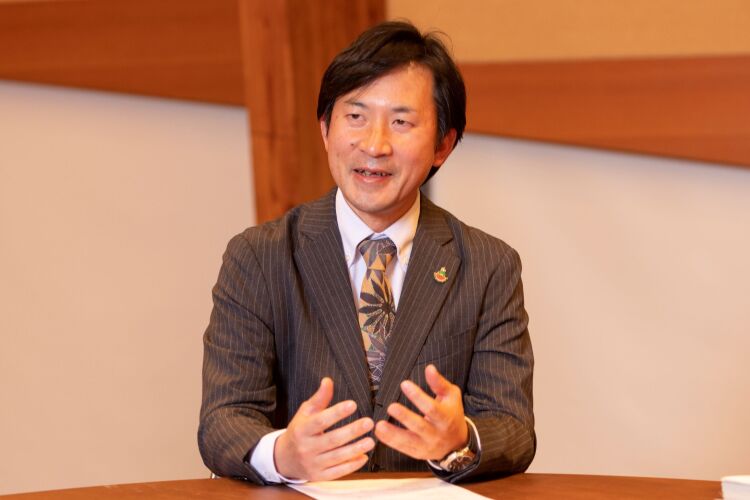
Morimoto Leveraging digital transformations to control aquaculture environments should increase productivity by leaps and bounds. Obviously new technologies can help to prevent disease, but they also allow us to make minute adjustments to things like water temperatures and feed based on both the growth trajectories of the fish and the degree to which they actually are growing. The digital space has made it possible to manage these kinds of farms extremely precisely based on accumulated data. Kasuga I agree, and I think that is where the knowledge, decision-making capabilities and responsiveness of our team at Maruha Nichiro will make a solid contribution to this business. We can definitely help to analyze those data and come up with solutions to unanticipated problems.
"Aquaculture 3.0" -- From Nyuzen Town to the World
—— One of the focuses of MC's latest management plan, Midterm Corporate Strategy 2024, is to use both energy and digital transformations to assist with Japan's "regional revitalization" work. In that context, this salmon aquaculture business seems a perfect fit.
Morimoto For sure. The aim of this land-based operation is to continue taking advantage of DX to minimize its environmental impact, stabilize production, and contribute to Nyuzen Town's sustainable growth and development. So I think it embodies MC's goal of revitalizing communities through EX and DX initiatives.
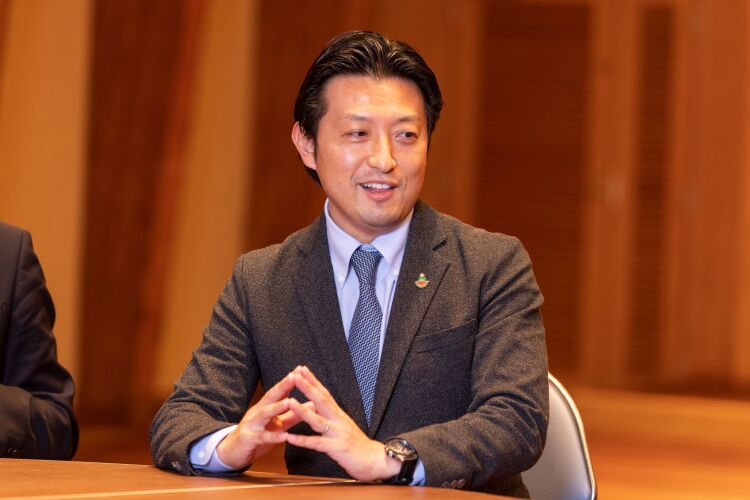
Kasuga Three to four decades ago, Japan's aquaculture technologies were the most advanced in the world, and one of our jobs was to introduce those technologies to other countries. Over time though, Norway and Chile started using IoT to drive their own tech revolutions, and now they have taken over as the industry's leaders. So you could say that Japan brought the world "aquaculture 1.0" and Norway and Chile brought the world an upgraded version, "aquaculture 2.0." However, this new land-based salmon-farming venture by Atland is innovative enough to turn the tables back in Japan's favor. By overcoming the geographical limitations of Sea cages aquaculture, this project will result in local production for local consumption, and its use of Nyuzen Town's natural resources will lessen its environmental impact. This is truly an innovative business that I think warrants recognition as the "Nyuzen model" in aquaculture. Our goal then, is to roll out a new and unparalleled version called "aquaculture 3.0." We are really keen to make it succeed, first here in Nyuzen Town, and then all over the world.
- * Volume 3 will feature part 2 of the roundtable discussion.
- * The interviews conducted for the purpose of this article were carried out in accordance with pandemic-related measures. Masks were only removed for photographs.
- Land-based Salmon-Farming Business (1)
- Land-based Salmon-Farming Business (2)
- Land-based Salmon-Farming Business (3)
